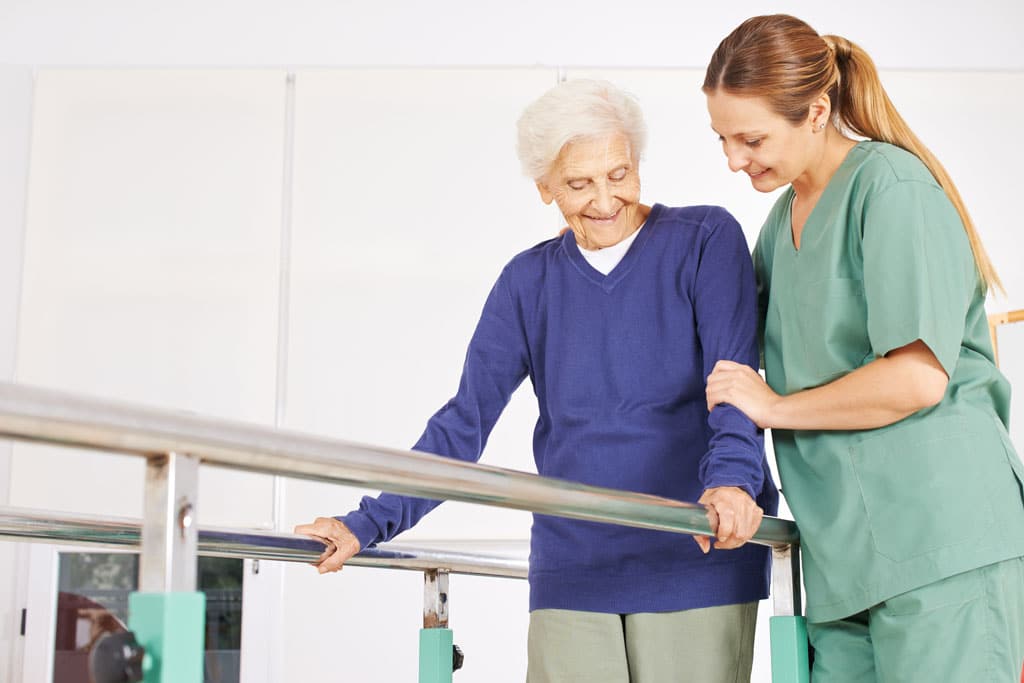Stephan Baldwin is the Director of Business Development for Assisted Living Center, an online resource for communities, articles, and guides for seniors.
Owning a physical therapist (PT) practice can be challenging but rewarding. People depend on you to get back to the state of health they were used to before an injury or illness.
Seniors are more susceptible to illness and injuries that can result in pain and difficulty performing daily tasks. It should not be surprising then that physical therapy is a common, if not necessary tool for seniors to increase strength, flexibility, and coordination. The National Institute of Health (NIH) estimates that 20% of the US population will be over the age of 65 by 2030, so now is the time to plan ways your practice can help seniors.
Common ailments older adults suffer from that can benefit from PT include broken hip recovery, osteoarthritis, Alzheimer’s, diabetes, stroke, incontinence, and many others.

Physical therapy helps seniors maintain their independence.
There are tens of thousands senior living communities in the United States. While some have their own in-house physical therapy, many refer residents to outside practices. PracticeSuite therapy software has features to track patient referral sources so you can keep track of what facilities are your best referral sources.
How Can You Help As A Physical Therapy Professional?
PTs can diagnose and treat medical issues and health problems in everyone, especially the elderly. After assessing a person’s issues a physical therapist will create a plan using a combination of exercise, stretching, walking and strength training to help the patient regain physical functions and reduce pain. In fact, a study by Chiro.org showed reduced pain in 241 people over the age 65 after 12 weeks of spinal manipulation therapy (SMT).
Popular Physical Therapy Techniques
- Manual Therapy is when a physical therapist uses their hands to massage and manipulate a patient’s soft tissue to relax, increase circulation, and reduce pain. Bones and joints can be pulled, twisted and pushed into place to improve range of motion and flexibility.
- Cold Therapy uses ice packs for 15-20 minute sessions, and the RICE technique of Rest, Ice, Compression, and Elevation. Cold therapy can relieve pain, reduce swelling, inflammation and is a great treatment for seniors suffering from Arthritis.
- Heat Therapy can be used on it’s own, or as a means to ‘warm up’ a patient’s muscles before exercise. Benefits include relaxing muscles, increased circulation, and loosening up stiff joints in people suffering from osteoarthritis.
- Hydrotherapy utilizes water for healing soft tissue, improving blood circulation, and is great for relaxing the entire body.
- Electrical Stimulation can create several different results for patients. It can be used to confuse the bodies pain signals, or to expand and contract muscles in seniors who have suffered a stroke.
- Ultrasound is a popular technique that can treat muscle spasms, and also relax the muscles before and after exercise using sound waves.
Treating Common Senior Conditions With Physical Therapy
Seniors deal with a multitude of physical issues they age. Physical therapists help aging adults manage their pain and symptoms of many common medical conditions.
There are several methods physical therapists utilize to alleviate pain.
Arthritis is very common in seniors over 65. Therapy can help curtail future symptoms with specialized exercises, electrical stimulation, and other PT techniques.
Stroke patients can benefit from very specialized rehabilitation therapies. There is the constraint-induced technique where the healthy limb is restrained, and the patient is forced to use their good arm or leg. There’s also motor imagery therapy that also stimulates parts of the brain that coordinates movement.
Exercise can improve physical coordination helping seniors suffering from Parkinson’s avoid the jerky movements the disease produces.
Elderly patients who suffer from incontinence are trained to focus on the the muscles that control their bladder and exercise them so they have better control over their bladder.
Currently, Alzheimer’s cannot be cured or even prevented. However certain exercises can delay the worst of the symptoms and the serious memory problems that occur later in the disease. Physical therapists use mirroring techniques that help patients visualize how to move.
Chronic obstructive pulmonary disease (COPD) can make breathing difficult for older adults, but physical therapy can help improve breathing by training muscles that control aerobic capacity.
Things To Remember When Treating Seniors
For practices catering to the therapy needs of seniors, it’s common for seniors to forget when their appointments are. PracticeSuite features unlimited appointment reminders helping aging adults keep booked sessions.
It’s pretty obvious that a good physical therapist can help seniors in every aspect of health care. To avoid frustration, your practice should keep in mind that elderly people each respond differently to physical therapy and not all seniors will regain their physical health. Despite this, you can continue to provide the care our aging population needs.
Sign up for our trial edition and see how we can help your physical therapy practice become more efficient.


